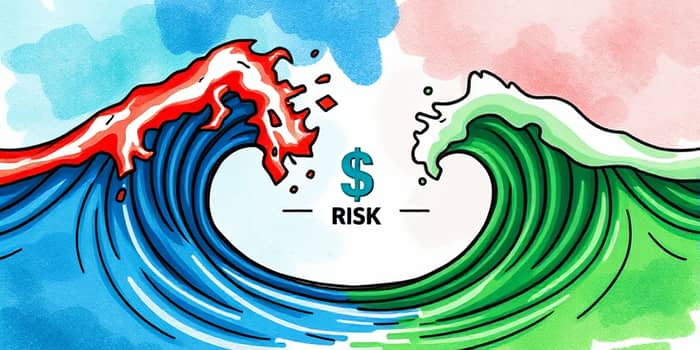
In the world of investing, grasping the nuances between risk and volatility can transform your financial journey. Many investors conflate these terms, leading to anxiety during market swings and missed opportunities. By learning to distinguish potential for permanent capital loss from short-term price fluctuations, you can build a portfolio that withstands both storms and calm seas.
Risk is the possibility of losing all or part of the value of an investment. It encompasses uncertainties that can lead to permanent capital loss or falling short of expected returns, affecting your long-term financial welfare.
Volatility measures how much and how quickly an investment’s value fluctuates over time. It captures both upward and downward swings, often quantified by tools like standard deviation or beta, reflecting frequency and magnitude of fluctuations.
The two concepts may appear similar at first glance, but their characteristics diverge in crucial ways:
Every asset class carries its own blend of risk and volatility. Understanding these profiles helps align investments with your goals and tolerance.
Investors rely on statistical indicators to quantify volatility and gauge risk exposure:
Standard Deviation assesses how much asset returns deviate from their average. A higher value indicates more pronounced price swings.
Beta compares an asset’s volatility to the broader market, helping you understand relative risk.
VIX, the Volatility Index, measures expected future swings in the S&P 500, often dubbed the market’s fear gauge.
Effective management ensures you stay on track toward your financial dreams, even when uncertainty looms.
Recognizing that risk and volatility are distinct empowers you to craft a portfolio tailored to your objectives. While volatility tests your nerves, risk tests your capital. Embrace the ebb and flow of markets without losing sight of your long-term vision.
By focusing on diversification, setting clear horizons, and leveraging statistical tools, you can harness volatility and mitigate risk. Ultimately, successful investing is not about avoiding uncertainty, but about understanding its forms and preparing wisely for the journey ahead.
References













